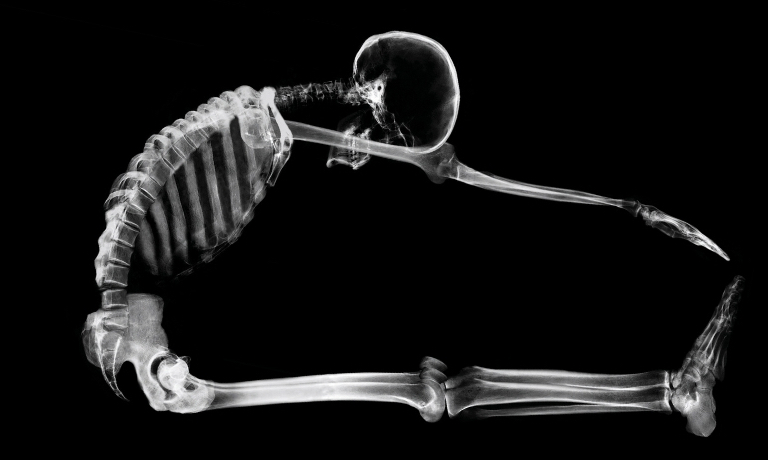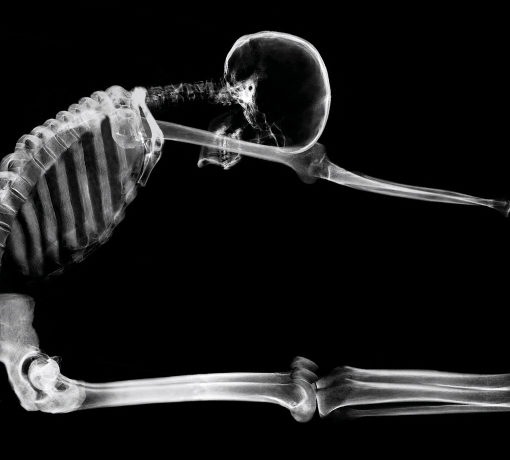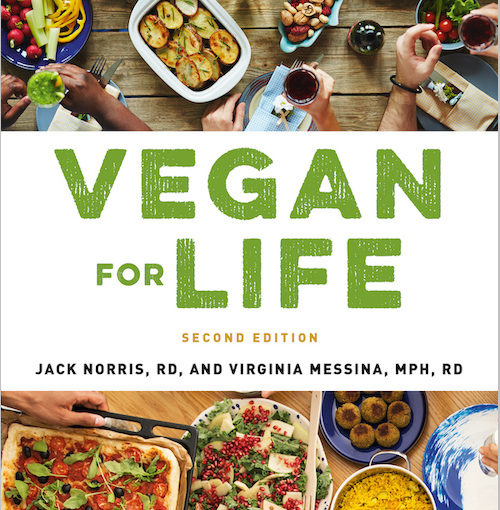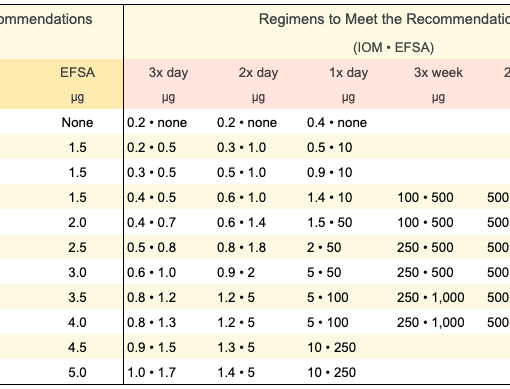
by Jack Norris, RD
Entire article is Bone Fractures among U.K. Vegans: Implications and Recommendations.
In Part 6 below:
- Resistance Training
- Conclusion
Resistance Training
It’s likely that the only sure way to maintain, and often increase, bone mineral density (BMD) is by doing strength training or activities that involve jumping. This will additionally increase body mass index due to increased muscle, counteracting the potential negative impact low body mass can have on bones.
Many cross-sectional studies have found that strength athletes have higher BMD, while results are mixed for distance runners (Suominen, 1993).
A 3-year prospective study found that collegiate female basketball, volleyball, and soccer players, and track sprinters and jumpers, had high baseline bone density that continued to increase over the course of the study. In the same study, a similar pattern, though less pronounced, was found in swimmers, and thought to be due more to their complementary weight-training program than the swimming (Stanforth, 2016).
A meta-analysis of 15 studies involving multicomponent exercise (often aerobics plus resistance training) among women approximately 50 to 70 years old found that exercise regimes that combine resistance, weight-bearing exercise, and impact-aerobic activities can increase or prevent loss of muscle and skeletal mass (Marín-Cascales, 2018).
Among a small group of postmenopausal women with osteopenia and osteoporosis, Linero and Choi (2021) found that a 12-week, moderate-to-high intensity weight-training program improved markers of bone health more than did low-intensity training.
While more research is needed, increasing BMD in the upper body probably requires upper-body resistance training, and building BMD generally requires using heavier weight (Marín-Cascales et al. suggests 70-80% of someone’s 1-repetition maximum).
Lu et al. (2016) instructed participants to do 12 minutes daily of Iyengar yoga. Of the 227 compliant participants, 83% had been diagnosed with osteoporosis or osteopenia (average age at entry was 68.2 years). After 2 years of more than every-other-day yoga, BMD increased in some locations. However, many of these participants appeared to be undergoing treatment for osteoporosis or osteopenia and there was no control group to determine if such treatment alone would have increased BMD. Kim et al. (2015) studied the impact of 8 months of 1 hour, twice per week of Ashtanga-based yoga among premenopausal women. They found a small, positive effect on bone formation markers compared to the control group, but BMD didn’t increase. While yoga seems promising as a method for maintaining bone, more research is needed.
Weight-training and bouncing exercises might sound intimidating, but a home program can be done using a set of dumbbells (where weight can be changed) and a few square feet of space to step back and forth. An efficient program can take 30 minutes, three times a week, and someone can ease into it at a pace that feels energizing rather than exhausting; there are many home workout plans to get ideas from on YouTube. Warming up and easing into more weight over time is safest.
Older people or those with injuries or osteoporosis should consult a healthcare professional to safely ease into a program.
Conclusion
Given the observational nature of EPIC-Oxford, we should keep in mind that the higher bone fracture rate for vegans could be due to confounding factors. It’s also possible that a suboptimal intake of multiple nutrients, especially in people with lower body mass index, could be responsible for the higher fracture rate and that’s why there’s no single, obvious culprit.
Inadequate intake can result from a lack of information about the importance of some nutrients or from a low caloric intake. The main nutrients of concern in the EPIC-Oxford cohort are vitamin A, zinc, and selenium, but vegans should pay attention to all nutrients on our Daily Needs page. Exercise involving weights and jumping is the most reliable way for otherwise healthy people to increase their bone mineral density; it also serves as a healthy way to increase body mass index and caloric intake.
References
Lu YH, Rosner B, Chang G, Fishman LM. Twelve-Minute Daily Yoga Regimen Reverses Osteoporotic Bone Loss. Top Geriatr Rehabil. 2016 Apr;32(2):81-87.





2 thoughts on “Bone Fractures among U.K. Vegans: Part 6”
Thank you for this very thorough and well written article.
There is one claim I haven’t seen addressed here or on this website at all.
Whenever this study first was published I saw a John Jaquish chiropractor making the claim that oxalate consumption leads to chronic inflammation which causes the higher rates of osteoporosisis and fractures in vegans.
I’m pretty sure he favors Shawn Baker style dietary advice rather than registered dietitians.
I’m just wondering if you have any commentary, if there is any validity to this claim.
Seth,
This study found that vegans may have lower levels of inflammation: Systematic review and meta-analysis of the associations of vegan and vegetarian diets with inflammatory biomarkers (2020). I’m not aware of research measuring associations between oxalate intake and bone fractures.